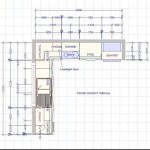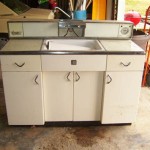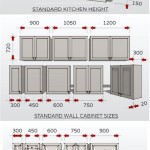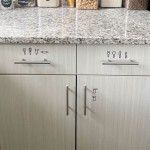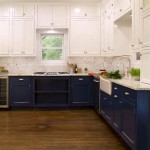The Functionality and Design of a 24-Inch Corner Kitchen Base Cabinet
The 24-inch corner kitchen base cabinet represents a crucial element in optimizing space and functionality within a kitchen design. These cabinets are specifically designed to fit into the corner of a kitchen layout, maximizing otherwise underutilized areas and providing valuable storage. Understanding the dimensions, construction, and potential applications of a 24-inch corner base cabinet is essential for anyone planning a kitchen renovation or new construction project.
Corner cabinets, in general, pose a unique challenge in kitchen design. Standard rectangular cabinets often leave a significant dead space in the corner, rendering it inaccessible and inefficient. The 24-inch corner base cabinet is engineered to mitigate this issue by utilizing its specific dimensions to fit snugly into the corner and offer more accessible storage solutions. This article will delve into the various aspects of these specialized cabinets, including their dimensions, construction materials, different access mechanisms, and design considerations.
Understanding the Dimensions and Spatial Optimization
The "24-inch" designation of a 24-inch corner kitchen base cabinet refers to the width of each side that extends from the corner along the adjacent walls. In essence, it means the cabinet occupies a 24-inch space along each wall meeting at the corner. This measurement is crucial for planning the overall kitchen layout and ensuring proper fitment between the cabinet and adjacent appliances or other cabinetry. However, it is vital to remember that the actual depth of the cabinet, measured from the corner point to the front face, will be significantly greater than 24 inches due to the angled construction required to fit into the corner.
Standard base cabinet height typically falls between 34.5 inches and 36 inches, including the countertop. The base cabinet's depth, excluding the door, is usually around 24 inches. These standard dimensions ensure compatibility with most kitchen appliances and countertop installations. The specific depth and height of the 24-inch corner cabinet may vary slightly depending on the manufacturer and chosen design, but these are general guidelines.
The primary advantage of a 24-inch corner base cabinet lies in its ability to transform what is typically a negligible or inaccessible space into usable storage. By efficiently utilizing the corner area, it maximizes the storage capacity of the kitchen, especially in smaller kitchens where spatial optimization is paramount. This type of cabinet is particularly effective for storing larger items, appliances, or less frequently used kitchenware.
When planning the layout, it is vital to consider the swing direction of the door. The door's swing radius must be considered to avoid interfering with adjacent cabinets or appliances. It is also essential to account for the toe kick, a recessed space at the bottom of the cabinet, usually about 4 inches high and 3 inches deep, that allows for comfortable foot placement while working at the countertop.
Construction Materials and Durability Considerations
The construction materials used in a 24-inch corner kitchen base cabinet significantly impact its durability, longevity, and overall aesthetic. The most common materials include plywood, particleboard, and medium-density fiberboard (MDF). Each material has its advantages and disadvantages.
Plywood is generally considered a high-quality material for cabinet construction due to its strength and resistance to moisture. Cabinets constructed with plywood are typically more durable and less prone to warping or sagging over time, particularly under heavy loads. Plywood's layered construction provides excellent screw-holding power, which is crucial for securing hinges, drawer slides, and other hardware.
Particleboard is a less expensive alternative to plywood. It is made from wood chips and resin, pressed together under high pressure. While particleboard is generally stable and provides a smooth surface for finishes, it is more susceptible to moisture damage than plywood. When exposed to water, particleboard can swell and lose its structural integrity. Particleboard cabinets are best suited for dry environments and require proper sealing to prevent moisture penetration.
Medium-density fiberboard (MDF) is another engineered wood product known for its smooth surface and consistent density. MDF is made from wood fibers and resin, similar to particleboard, but the fibers are finer, resulting in a denser and more stable material. MDF is less prone to expansion and contraction due to humidity changes compared to solid wood. It is an excellent substrate for paint and veneers, producing a smooth and flawless finish. However, MDF is also susceptible to water damage and should be properly sealed.
The cabinet's hardware, including hinges, drawer slides, and handles, also plays a vital role in its durability and functionality. High-quality hardware ensures smooth and reliable operation, extending the cabinet's lifespan. Soft-close hinges and drawer slides are particularly desirable, as they prevent slamming and reduce wear and tear on the cabinet components. The finish applied to the cabinet exterior also contributes to its protection against scratches, stains, and moisture damage. Durable finishes, such as lacquer or polyurethane, offer excellent resistance to daily wear and tear.
Access Mechanisms and Internal Organization
Accessing the contents of a corner cabinet can often be challenging due to its depth and location. Several access mechanisms have been developed to address this issue and improve the functionality of 24-inch corner kitchen base cabinets. The most common options include lazy susans, blind corner pull-outs, and hinged door systems with internal shelving.
The lazy susan is a classic solution for corner cabinets. It consists of rotating shelves that allow easy access to items stored at the back of the cabinet. Lazy susans are available in various configurations, including full-circle and pie-cut shapes, to accommodate different cabinet designs. They are particularly useful for storing pots, pans, and other frequently used items. The rotating mechanism enables users to retrieve items without having to reach deep into the cabinet.
Blind corner pull-outs are another popular option for maximizing access to corner cabinets. These systems typically consist of a set of interconnected shelves or baskets that can be pulled out of the cabinet in a single motion. When the pull-out is extended, it brings the items stored at the back of the cabinet within easy reach. Blind corner pull-outs are available in various designs, including those with adjustable shelves and integrated dampers for smooth and quiet operation. These systems are particularly useful for storing smaller items or items that need to be frequently accessed.
Hinged door systems with internal shelving are a more traditional approach to corner cabinet access. These systems typically feature a standard hinged door that opens to reveal a series of fixed or adjustable shelves. While this approach may not provide the same level of accessibility as lazy susans or blind corner pull-outs, it is a cost-effective option that can still significantly improve the functionality of a corner cabinet. Shelving can be customized to accommodate specific storage needs, such as storing tall bottles or bulky appliances.
In addition to the access mechanism, the internal organization of the cabinet is crucial for maximizing storage efficiency. Adjustable shelves allow users to customize the cabinet's interior to accommodate items of different sizes. Dividers and organizers can be used to separate and contain smaller items, preventing them from getting lost or disorganized. Pull-out drawers or trays can also be added to the cabinet to provide additional storage and improve accessibility. Proper internal organization can significantly enhance the usability of a 24-inch corner kitchen base cabinet.
Consideration should also be given to the placement of electrical outlets within or near the cabinet. This is especially important if the cabinet is intended to house small appliances that will be used frequently. Outlets provide a convenient power source for these appliances, eliminating the need to use extension cords or other cumbersome solutions. Integrating outlets directly into the cabinet ensures a clean and organized kitchen space.
Ultimately, the choice of access mechanism and internal organization will depend on individual preferences, budget constraints, and specific storage needs. Carefully evaluating these factors will ensure that the 24-inch corner kitchen base cabinet is both functional and aesthetically pleasing.

Corner Wall Cabinet Dimensions 24 Inch Angle Kitchen With Shaker Doors At Outdoor Cabinets Base

Home Decorators Collection Newport Pacific White Plywood Shaker Assembled Ez Reach Corner Kitchen Cabinet Right 24 In W X D 34 5 H Ezr33r Npw The Depot

Wdc2430 Shaker White Wall Corner Cabinet 24 Inch Wide And 30 High Wood Kitchen Cabinets Stones City

Bl 27 Kitchen Corner Base Cabinet With Blind W X 34 1 2 H 24 D Custom Unfinished Stained Or Painted

Diamond Express Jamestown 48 In W X 34 5 H 24 D Cloud Gray Painted Blind Door And Drawer Base Fully Assembled Cabinet Flat Panel Shaker Style The Kitchen Cabinets Department

Project Source 24 In W X 30 H 12 D Natural Unfinished Oak Diagonal Corner Wall Fully Assembled Cabinet Flat Panel Square Door Style The Kitchen Cabinets Department At Com

Luxxe Cabinetry Thornbury 24 In W X 36 H 12 D Pastel Gray Painted Blind Corner Wall Fully Assembled Cabinet Recessed Panel Shaker Door Style The Kitchen Cabinets Department At Com

Hampton Bay Shaker Partially Assembled 36 X 34 5 24 In Corner Sink Base Kitchen Cabinet Dove Gray Kcsb36 Sdv The Home Depot

Design House Fully Assembled Corner Cabinet In Espresso 24 Inch By 30 12 Com

Design House Fully Assembled Corner Cabinet In Espresso 24 Inch By 30 12 Com
Related Posts


